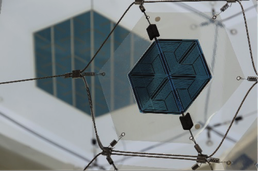Seminar 23rd November 2015 10 a.m. 176/2013
Simulation of Organic Photovoltaics
Dr Michal Krompiec
Merck Chemicals Ltd.
- Categories
- NGCM
- Submitter
- Susanne Ufermann Fangohr
Summary
With growing energy demands and pressure to switch to renewable energy sources, solar photovoltaics (PV) is seeing an increase in its share in global energy production. Organic photovoltaics (OPV) offer certain advantages as compared to established PV technologies (such as crystalline silicon panels). OPV can be printable, lightweight and flexible, thereby allowing great freedom of design and low installation costs. Furthermore, while current OPVs are only around half as efficient as silicon PV in full sunlight, they are more effective in diffuse light and indoors, where silicon panels struggle to perform. OPVs are usually realized in the form of a blend of donor and acceptor materials (bulk heterojunction) sandwiched between hole- and electron-selective contacts. Device performance depends critically both on energy levels of the materials (excitation energy of the absorber, energetic offset between donor and acceptor) and the microstructure of the blend, the latter being very difficult to predict. In the talk, different approaches to simulation of OPV devices will be discussed, with particular focus on building structure-property relationships and in-silico molecular design.
Bio
Dr. Michal Krompiec completed Ph.D. in chemistry at University of Silesia in Katowice (Poland) in organic synthesis and electrochemistry of conjugated polymers in 2010. Following a brief appointment as a Research Fellow at the same University, in 2011 he moved to the group of Prof. I.F. Perepichka at Bangor University to work on synthesis of thiophene-based monomers and oligomers, optical spectroelectrochemistry and molecular modelling of optoelectronic materials. Since 2013, he is a Research Scientist in the Organic Photovoltaics team at Merck Chemicals. His research focuses on design and synthesis of novel polymers for organic photovoltaics.
